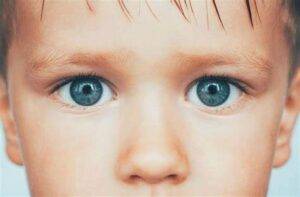Table of Contents

When it comes to your child’s health, their eyes are a window not just to their soul but to their overall well-being. One eye condition that often goes under the radar is Uveitis, an inflammation of the middle layer of the eye, commonly referred to as the uvea or uveal tract. As a pediatrician with a specialization in obesity medicine, I aim to provide a comprehensive understanding of Uveitis—its causes, symptoms, treatments, and preventive measures—so you can act promptly to protect your child’s vision.
Understanding Uveitis
Uveitis is an inflammatory condition affecting the uvea, which is crucial for supplying nutrients to the vital parts of your eyes. When inflamed, it can lead to severe eye problems, including blindness, if not adequately managed.
Causes of Uveitis
Primary Causes
- Autoimmune Disorders: Such as juvenile arthritis.
- Infections: Bacterial, viral, or fungal infections can trigger Uveitis.
- Trauma: Physical damage to the eye.
Additional Risk Factors
- Genetic Predisposition: A family history of autoimmune disorders.
- Environmental Factors: Exposure to toxins.
- Immunocompromisation: Either due to disease or medications.
Recognizing Uveitis: Symptoms to Look Out For
- Redness: Eye redness that does not go away.
- Pain: Mild to severe eye pain.
- Photophobia: Sensitivity to light.
- Blurred Vision: Decreased clarity of sight.
- Floaters: Floating specks in the field of vision.

Diagnosis and Treatment
Diagnostic Procedures
- Eye Examination: Comprehensive ophthalmic examination.
- Blood Tests: To identify underlying systemic issues.
- Imaging: Like an optical coherence tomography (OCT) to assess damage.
Treatment Options
- Anti-inflammatory Medications: Steroidal eye drops are commonly used.
- Immunosuppressants: For severe or chronic cases.
- Antibiotics or Antivirals: If caused by an infection.
Preventive Measures: Shielding the Windows to the Soul
- Regular Eye Checks: Early diagnosis leads to better outcomes.
- Manage Underlying Conditions: Keep autoimmune conditions in check.
- Safety Measures: Use protective eyewear during physical activities.

Concluding Thoughts: A Focused Approach to Eye Health
Given the complexity and potential severity of Uveitis, it’s vital for parents to recognize its symptoms early. Timely diagnosis and effective treatment are crucial in safeguarding your child’s vision and, by extension, their quality of life.
References
- American Academy of Ophthalmology – Uveitis
- National Eye Institute – Uveitis
- Pediatric Rheumatology Journal – Juvenile Uveitis
Disclaimer: The information in this article is intended for educational purposes and should not replace professional medical advice.
FAQ
What is Uveitis?
Answer: Uveitis is an inflammation of the middle layer of the eye, called the uvea or uveal tract. This condition is crucial because the uvea supplies nutrients to vital parts of the eye, and inflammation can lead to severe eye problems, including blindness if not managed properly.
What Causes Uveitis in Children?
Answer: Uveitis in children can be caused by autoimmune disorders such as juvenile arthritis, infections (bacterial, viral, or fungal), and physical trauma to the eye. Additional risk factors include genetic predisposition, environmental exposures to toxins, and being immunocompromised.
How is Uveitis Diagnosed and Treated?
Answer: Uveitis is diagnosed through comprehensive eye examinations, blood tests to identify underlying systemic issues, and imaging techniques like optical coherence tomography (OCT). Treatment options include anti-inflammatory medications (steroidal eye drops), immunosuppressants for severe cases, and antibiotics or antivirals if the cause is infectious.
What Are the Symptoms of Uveitis?
Answer: Symptoms of uveitis include persistent eye redness, mild to severe eye pain, sensitivity to light (photophobia), blurred vision, and floaters (floating specks in the field of vision). Early recognition of these symptoms is important for timely diagnosis and treatment.
How Can Uveitis be Prevented?
Answer: Preventive measures for uveitis include regular eye checks for early diagnosis, managing underlying conditions such as autoimmune disorders, and using protective eyewear during physical activities to prevent trauma to the eyes. Keeping these factors in check helps protect your child’s vision and overall eye health.


